ICE
Latest
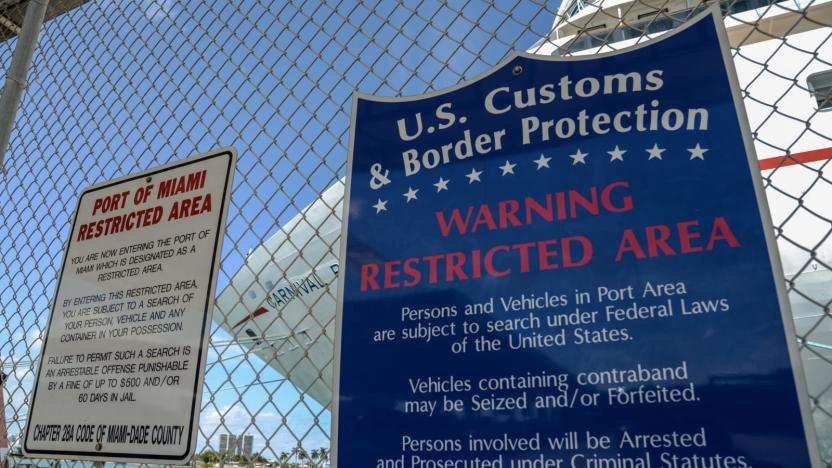
ACLU: border agents regularly perform 'warrantless' device searches
Privacy advocates have long been concerned that US border agents may be overstepping their boundaries when searching devices, and the ACLU just obtained evidence appearing to support that theory. The civil rights group has motioned for summary judgment in its lawsuit against the Department of Homeland Security after its discovery process revealed far-reaching policies for "warrantless and suspicionless" searches. Reportedly, both Customs and Border Protection as well as Immigration and Customs Enforcement have claimed "near-unfettered authority" to search phones, PCs and other devices, even though the requests fall well outside their purview.

Dozens of law enforcement agencies are helping ICE track cars
More than 9,200 Immigration and Customs Enforcement employees have access to a license plate database that allows authorities to track the movement of vehicles over time. The American Civil Liberties Union says more than 80 law enforcement agencies across several states are sharing license plate details with ICE, which purportedly doesn't have sufficient safeguards to prevent abuse.

'Fortnite' season seven adds planes, custom weapons and lots of ice
I don't want to undersell this, but if you've been looking to play as a swole Father Christmas, Epic Games' latest Fortnite update has got you covered. Season seven of the battle royale shooter has arrived, bringing with it weapon customization, a brand new icy biome, a bunch of new skins and even a new vehicle: planes.

Amazon pitched ICE on its facial recognition technology
Amazon has faced pushback, both internally and externally, for selling its Rekognition facial recognition technology to law enforcement. It's a move the company's own employees said would "serve to harm the most marginalized." Now, The Daily Beast reports that Amazon met with ICE officials in June, and it pitched the agency on Rekognition.

California mall owner's license plate readers send info to ICE (updated)
Some shopping malls in California are scanning license plates and sending that data to a surveillance vendor that works with -- and sells information to -- Immigrations and Customs Enforcement. That's according to a report by tech watchdog group Electronic Frontier Foundation, which discovered that a regional real estate company operating retail centers across the western state is feeding visitor information into a nationwide database that ICE reportedly gained access to at the beginning of this year.
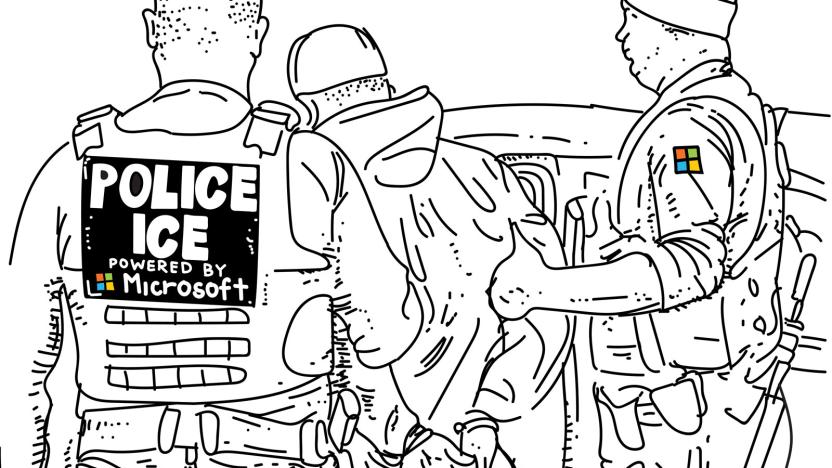
Microsoft’s ICE involvement illustrates tech’s denial problem
Nearly a decade ago, I had the good fortune of being one of the last people to interview the founder of Commodore International, Jack Tramiel (famous for Commodore computers and the popular C64), before he passed away. At 83, he died from heart failure after pioneering the consumer market for personal computers and home gaming, and working toward changing people's lives for the better through technology.

Microsoft employees criticize ICE contract amid recent reports
Add Microsoft to the list of companies whose government deals are provoking outrage both inside and outside their offices. The Redmond firm sparked a wave of criticism on social networks after users discovered a January blog post noting that the company's Azure cloud service team was "proud to support" US Immigration and Customs Enforcement, which has come under fire for policies that include separating children from parents. Microsoft briefly took down the post on June 18th in response, but the company has since described it as "a mistake" and replaced the content.
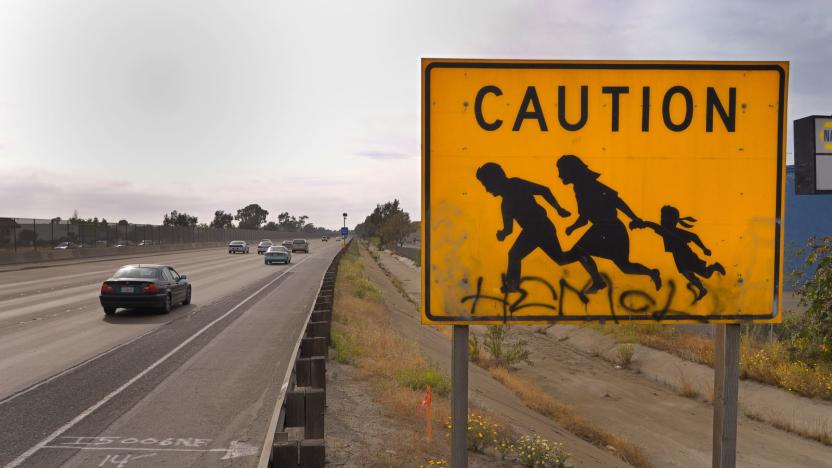
America can't solve its migrant labor crisis with automation
From the moment that Donald Trump set foot on the Trump Tower escalator, the promise of mass deportations for undocumented immigrants was a pillar of his presidential campaign. This is one promise that the current administration has managed to keep, with ICE enforcement efforts skyrocketing since Trump took office in January 2017. While the president's executive orders on immigration have played well with his political base, they've caused havoc with a number of US industries, from tourism to construction. But nowhere are the detrimental effects of these policies more clearly illustrated than in the agricultural sector. What's more, the current state of agricultural automation appears woefully unprepared to fully supplement the loss of migrant labor.

Mazda says next-gen gasoline engine as clean as an EV, well-to-wheels
Mazda is already working on the successor to its efficient Skyactiv-X motors, and thinks it could make cars as clean as EVs, if you take into account CO2 from electricity production. The automaker believes it can increase the efficiency of the Skyactiv-3 to 56 percent, close to the maximum theoretical thermal efficiency of an "Otto" cycle gas engine, Mazda's Mitsuo Hitomi told Automotive News. If it can achieve that mark, it would reduce CO2 pollution by a quarter, making Skyactiv-3 motors as efficient as EVs on a well-to-wheels basis.
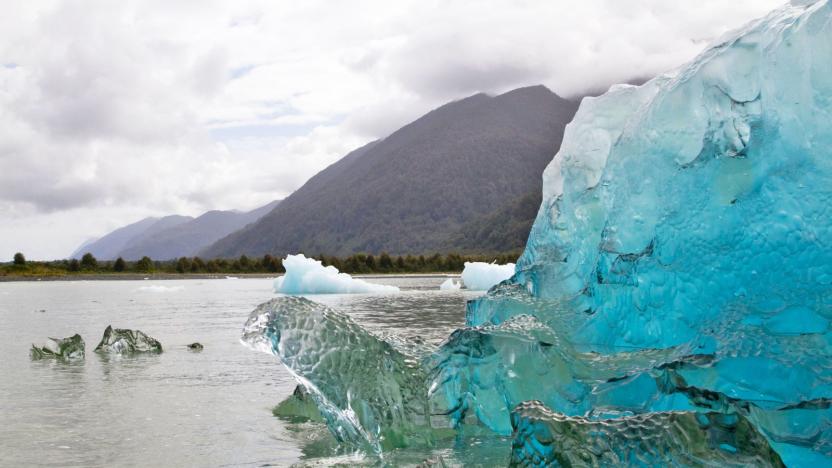
NASA can pinpoint glaciers that might flood coastal cities
It's safe to say that melting glaciers and ice sheets are bad things: they raise ocean levels and risk flooding low-lying coastal areas. But which of these icy bodies do you have to worry about in your area? NASA might help. It recently developed a technique that can determine which glaciers and sheets pose a threat to a given area. It's complex, but it could make a big difference for coastal cities that may need to react to global warming.

Judge rules NYPD needed a warrant before using cell-site simulator
A Brooklyn judge has ruled that because the New York Police Department (NYPD) used a cell-site simulator, also known by the brand name Stingray, to track down a murder suspect without a warrant, some evidence against the suspect will be thrown out. As the New York Times reports, the NYPD initially denied using such a device in this case, but later conceded that it had. Following the suspect's arrest, he was picked out of a lineup by another victim, and that's what is being tossed out.

Court rules Stingray use without a warrant violates Fourth Amendment
Today, the Washington DC Court of Appeals overturned a Superior Court conviction of a man who was located by police using a cell-site simulator, or Stingray, CBS News reports. The court ruled that the defendant's Fourth Amendment rights were violated when law enforcement tracked down the suspect using his own cell phone without a warrant.

ICE insists it doesn’t use Stingrays to track undocumented immigrants
In a letter (PDF), the acting director of the Immigration and Customs Enforcement (ICE) said that the agency doesn't use its Stingray mobile call-intercepting devices while enforcing immigration laws. It does deploy them when pursuing criminal suspects, however, and individual agents might use them while acting in a joint task force with other federal officers.

Trappist-1 planets may have formed from chunks of melting ice
After its discovery, Trappist-1 instantly became one of the most interesting stars in the Milky Way, with seven Earth-sized planets including three in the life-supporting "habitable zone." But, why did the planets form in such uniform Earth-like sizes so close to their star? Astronomers from the University of Amsterdam believe everything can be explained by small chunks of ice that clustered in the region where water just starts to freeze. Eventually, enough chunks clotted together like plasticine, forming worlds just inside the "ice zone" -- the perfect spot for life.
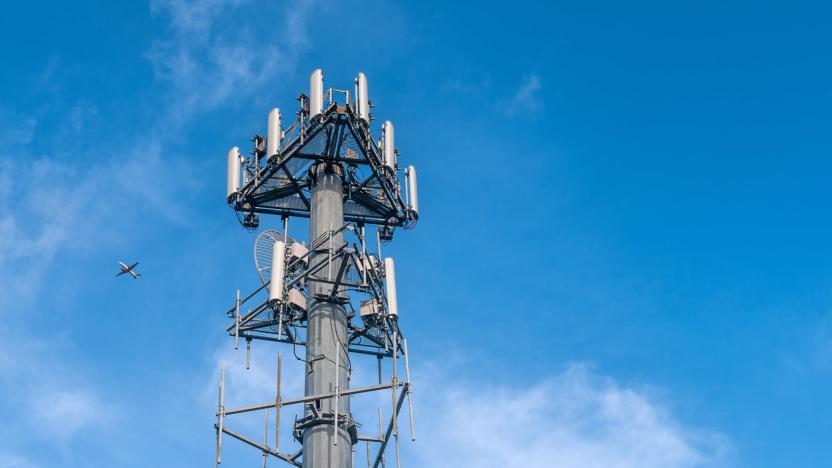
Federal agents used a Stingray to track an immigrant's phone
Investigators from Immigration and Custom Enforcement as well as the FBI have been using controversial cell-spoofing devices to secretly track down undocumented immigrants, court records show. According to a report the Detroit News, which obtained an unsealed federal search warrant affidavit, FBI and ICE agents in Michigan used a Stingray device to ensnare a restaurant worker from El Salvador in March. The devices, which were originally intended for counter-terrorism use, have come under fire because there are currently no clear rules governing when law enforcement is allowed to deploy them. Even in cases where authorities have a clear target in mind, they run the risk of exposing personal information of other innocent people in range.

Dwarf planet Ceres is 'oozing' with water
Scientists already knew via remote observations that Ceres, the dwarf planet (or humongous asteroid if you prefer), has plenty of water in it. The Dawn probe has now revealed that the asteroid is composed of as much as 30 percent water at the poles, explaining its ice volcano and weird bright spots. "It's just oozing," Planetary Science Institute's Thomas Prettyman told Nature, adding that you'd "just swipe and find the ice table" at Ceres' northern pole.

ICYMI: One day, devices will charge when they're pushed
try{document.getElementById("aol-cms-player-1").style.display="none";}catch(e){}Today on In Case You Missed It: Michigan State University engineers built a handful of devices that have one thing in common: They all charge when they're pressed on or otherwise pushed because the silicone wafers inside have ions in each layer that create energy when folded or manipulated. If the phone Gods care a thing about us, this could mean that one day our devices won't need to be charged at all-- except by being used.

Nanotubes can turn water solid when it should be boiling
Scientists have long known that under the right conditions, small amounts of water can be coaxed into changing its boiling or freezing point. A pot of water takes less energy to boil on the top of Mount Everest, for instance, and liquid under pressure takes a little more heat to convert into steam. A group of researchers at MIT has recently taken this effect a step further -- observing that water in nanotubes can actually freeze into a solid at temperatures well beyond its natural boiling point.
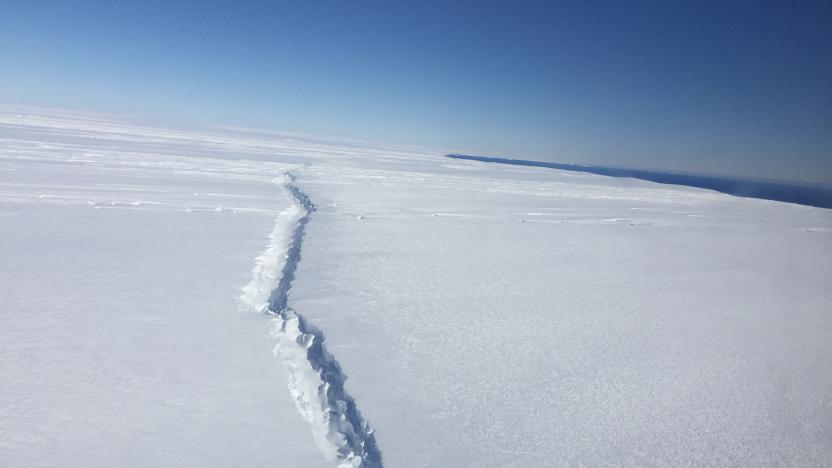
Massive Antarctica ice sheet is cracking due to warming oceans
When a giant (225 square mile) slice of Antarctica's Pine Island Glacier broke off in 2015, scientists wondered exactly what caused it. Well, they now have an explanation... and it's not very reassuring. They've determined through satellite imagery that the break started when a rift was formed at the base of the West Antarctica Ice Sheet, almost 20 miles inland, in 2013. Most likely, warming oceans intruded the sheet at the bedrock well below sea level, triggering cracks that gradually made their way upward. In other words, Antarctic ice could be much more susceptible to breaking up than it seems on the surface, and that separation may be happening faster than researchers expected.

Mars hides a gigantic ice sheet that may help astronauts
As a rule, the truly large deposits of ice on Mars are at the poles... right? No. Researchers using the Mars Reconnaissance Orbiter's ground-penetrating radar have discovered that the planet's Utopia Planitia basin is hiding a thick (260 to 560 feet) ice sheet larger than the state of New Mexico. It's at least 50 percent pure, too. Observers had long suspected that the area had water thanks to surface cracking and depressions, but the previous explorer, the Mars Odyssey spacecraft, couldn't study much deeper than the surface.









